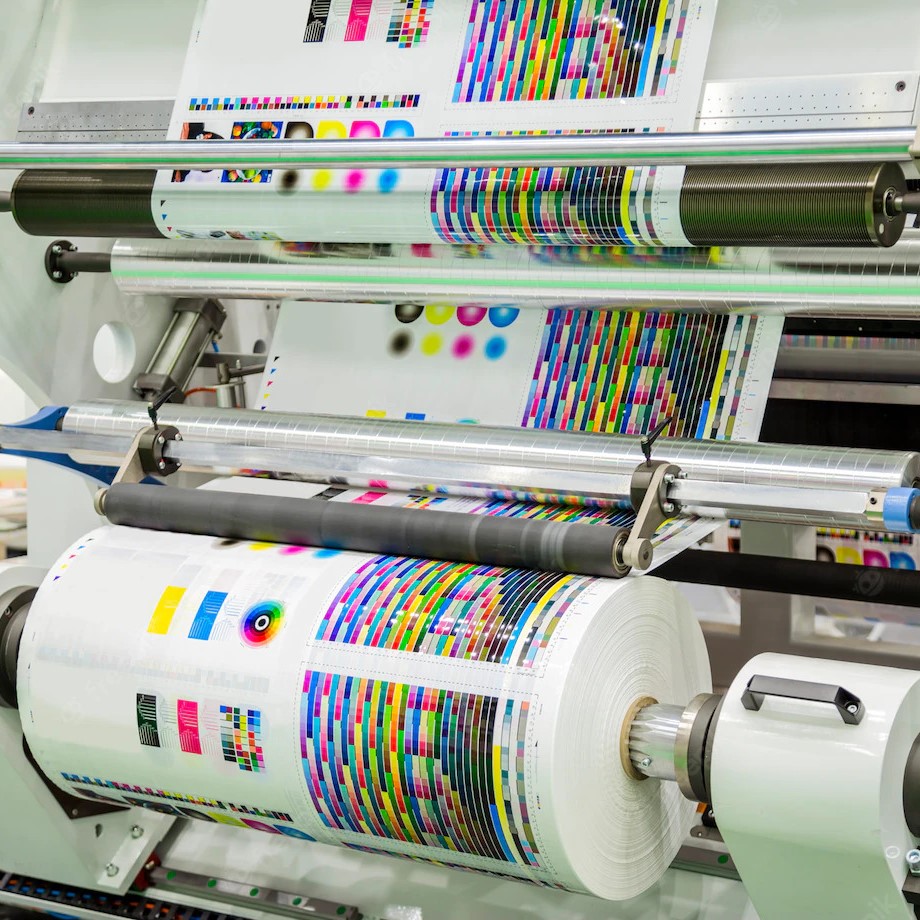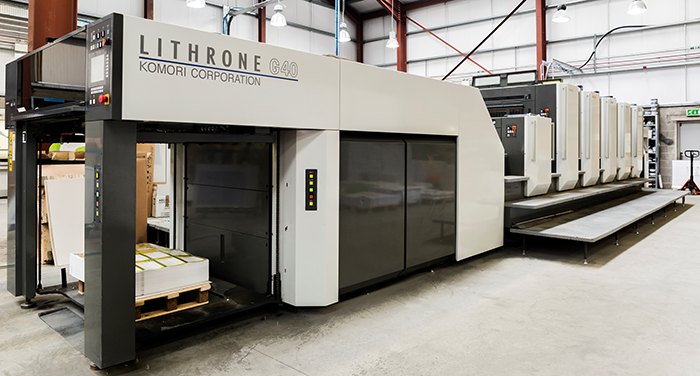The Necessary Overview to Understanding Litho Printing and Its Applications
Litho printing stands as a significant method in the printing industry, rooted in the concepts of oil and water repulsion. This strategy not only provides top notch pictures yet likewise deals with numerous business needs. Its applications vary from marketing materials to product packaging, showcasing its flexibility. As the industry adapts to new innovations, the advancement of litho printing increases inquiries concerning its future and relevance in a digital landscape. What exists ahead for this enduring technique?

What Is Litho Printing?
Litho printing, a commonly made use of printing technique, relies on the concept of oil and water repulsion. This technique uses a level printing surface, normally a metal plate, which is dealt with to assure that the photo locations are responsive to oil-based inks while the non-image locations repel them. The procedure begins with the development of a photo on home plate, often with drawing or photo ways. Once the image is prepared, home plate is wetted with water, complied with by the application of ink. The ink sticks only to the image locations, permitting accurate recreation of graphics and text. Litho printing is favored for its ability to produce high-quality prints with great information and lively colors. It is generally made use of in business applications, including newspapers, publications, and product packaging, showcasing its adaptability and efficiency in meeting the needs of modern printing.
The History of Lithography
Lithography is a modern printing staple, its beginnings map back to the late 18th century when German playwright Alois Senefelder developed the strategy in 1796. Established as a technique for duplicating texts and pictures, lithography used a flat rock surface area to produce prints via a chemical process. Senefelder's advancement enabled for higher flexibility and artistic expression contrasted to previous printing methods.By the 19th century, lithography obtained extensive acceptance, becoming a preferred option amongst musicians and authors. It allowed the mass production of illustrations, maps, and posters, especially affecting the printing industry. The method additionally evolved with the introduction of lithographic presses, enhancing effectiveness and quality.As the industrial transformation progressed, lithography adapted to satisfy the needs of business printing, paving the method for contemporary applications. Today, it stays an essential technique in various markets, including posting, packaging, and fine art recreation.
How Litho Printing Works
A vital feature of litho printing is its dependence on the concept of oil and water repulsion - litho printing. In this procedure, pictures are transferred from a flat surface, commonly a metal or polymer plate, to paper. The plate is dealt with so that the areas intended for printing bring in ink, while the non-image areas repel it as a result of their fondness for water. The printing starts by wetting home plate with water, which adheres to the non-image areas. Consequently, an oil-based ink is used, sticking only to the designated image areas.When the plate enters into call with the substratum, the ink is moved, creating a print. The litho printing procedure is qualified of producing top quality images with great information. It is often made use of for mass production because of its efficiency and uniformity, making it a preferred approach for industrial printing applications
Advantages of Litho Printing
One remarkable advantage of litho printing is its capability to produce high-grade pictures constantly, making it a perfect selection for business tasks. This printing method utilizes a flat printing plate, guaranteeing also ink distribution and sharp details. Litho printing is likewise renowned for its shade accuracy, making it possible for lively and true-to-life reproductions, which is essential for branding materials.Moreover, it sustains a wide range of substratums, including paper, cardboard, and even particular plastics, enhancing its flexibility. The procedure is economical for big runs, as economic situations of scale lower per-unit prices. Additionally, litho printing has a fast turn-around time, enabling effective manufacturing schedules.Its longevity likewise indicates that published products resist fading, guaranteeing that the final item keeps its aesthetic allure gradually. Overall, these advantages make litho printing a favored option throughout numerous sectors, contributing to its enduring appeal.
Applications of Litho Printing in Service
As businesses progressively seek trustworthy and top quality printing services, litho printing emerges as a vital gamer in various applications. This technique is particularly favored for creating advertising products such as sales brochures, leaflets, and magazines, thanks to its ability to deliver dynamic shades and sharp images. In addition, litho printing is often used for product packaging solutions, enabling companies to create appealing labels and boxes that improve product appeal.In the sector of business identification, litho printing is critical in generating expert stationery, business cards, and marketing merchandise, which aid enhance brand recognition. It is widely used in the posting sector for printed materials such as publications and publications, where constant high quality is critical. Overall, litho printing's versatility and performance make it a crucial device for companies aiming to connect successfully and establish a strong market visibility.
Artistic Use Litho Printing
Litho printing works as a functional medium in the domain of printmaking, offering musicians a distinct approach to reveal their creativity. This strategy enables a variety of creative applications, from traditional prints to modern interpretations. By discovering the nuances of litho printing, musicians can harness its unique qualities to improve their work.

Printmaking Techniques Introduction
The artistry of printmaking includes a varied variety of strategies, with litho printing sticking out for its unique strategy to picture creation. This technique counts on the principle of oil and water repulsion, permitting musicians to draw directly onto a sedimentary rock or metal plate with a greasy tool. Once prepared, home plate is moistened and inked, moving the image onto paper through stress. Litho printing is commemorated for its ability to produce fine information and abundant tonal variations, making it a popular choice among artists. Furthermore, the procedure is versatile, accommodating both standard strategies and modern adaptations. This versatility enables litho printing to bridge numerous imaginative styles, enriching the printmaking landscape with its unique features and capabilities.
Unique Artistic Applications
Exploring the distinct creative applications of litho printing exposes its impressive convenience in various creative fields. Artists utilize litho printing to create intricate designs and textures, allowing for expressive and comprehensive works. The process helps with the recreation of dazzling colors, making it perfect for illustrations and art prints. Many contemporary musicians welcome lithography for its capacity to integrate standard strategies with contemporary ideas, resulting in innovative artwork. Furthermore, litho printing is often used in the manufacturing of restricted edition prints, enhancing their worth and allure. The tactile quality of litho prints adds a distinctive measurement, drawing in collectors and art fanatics alike. On the whole, litho printing stays a significant tool for creative expression, connecting traditional methods Learn More Here with contemporary imagination.
The Future of Litho Printing in a Digital Globe
As the printing industry progresses, litho printing faces the obstacle of incorporating electronic innovations to stay relevant. Techniques concentrated on electronic assimilation, together with trends in sustainability and advancement, will form its future - litho printing. Understanding these characteristics is necessary for sector stakeholders looking to adjust to a swiftly changing landscape
Digital Assimilation Strategies
A growing variety of litho printing business are embracing my site electronic combination techniques to stay affordable in an increasingly digital landscape. By integrating electronic workflows, these business can enhance processes and improve efficiency. This assimilation permits for real-time information monitoring and boosted interaction in between divisions, minimizing turn-around times noticeably. In addition, digital tools make it possible for much better personalization and customization of published products, satisfying particular consumer demands. Companies are also embracing crossbreed printing options that combine conventional litho strategies with digital technologies, offering adaptability in production. Leveraging data analytics aids in recognizing market patterns and client preferences, allowing services to make enlightened choices. On the whole, digital integration is ending up being crucial for litho printing firms intending to introduce and react to progressing market needs.
Sustainability and Advancement Patterns

Regularly Asked Concerns
What Products Are Generally Used in Litho Printing?
The materials commonly made use of in litho printing include aluminum plates, ink, water, and paper. Each part plays an important duty in the printing process, guaranteeing high-grade picture recreation and efficient transfer of ink onto the substratum.
How Does Litho Printing Contrast to Digital Printing?
Litho printing provides premium shade uniformity and high quality for large runs, while digital printing stands out in short runs and modification. Each technique has distinctive benefits, satisfying different requirements based upon manufacturing range and cost-efficiency.
What Is the Common Turnaround Time for Litho Printing Projects?
The regular turnaround time for litho printing jobs differs, normally More Help varying from a couple of days to numerous weeks. Aspects affecting this timeframe consist of task complexity, quantity, and required ending up processes, influencing general production schedules.
Can Litho Printing Accommodate Customized Sizes and Formats?
Litho printing can certainly fit custom-made dimensions and styles, permitting flexibility in layout. This flexibility enables customers to attain unique print outcomes customized to their specific requirements, enhancing the general effectiveness of their tasks.
What Are the Ecological Effects of Litho Printing?
The environmental influences of litho printing include resource usage, chemical usage, and waste generation. Developments in sustainable practices and eco-friendly products are slowly reducing these negative results, promoting an extra eco accountable approach to printing.